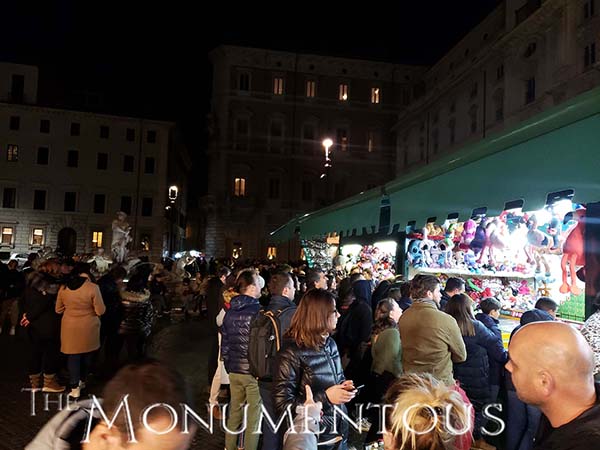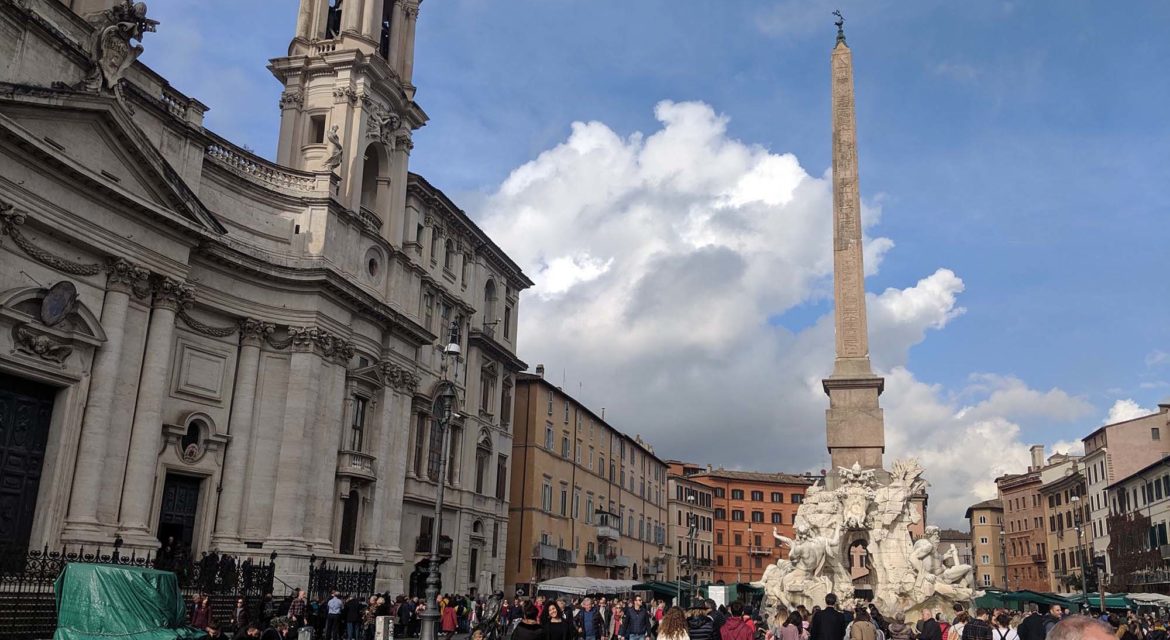 Distinctive Baroque Roman architecture well as the three fountains that dominate the Piazza Navona have come to define it in an especially profound manner. This definition has enabled it to become a popular hub of activity for both residents and visitors, showcasing how one of the largest piazza squares in Rome has been able to combine history and experiences in an incredibly unique way.
Distinctive Baroque Roman architecture well as the three fountains that dominate the Piazza Navona have come to define it in an especially profound manner. This definition has enabled it to become a popular hub of activity for both residents and visitors, showcasing how one of the largest piazza squares in Rome has been able to combine history and experiences in an incredibly unique way.

Once the Site of the Stadium of Domitian
Piazza Navona is built on the site of the Stadium of Domitian, which was constructed in the 100s AD. It was used mostly for athletic contests but served a variety of purposes over hundreds of years. As the city declined in the 3rd and 4th centuries, the populace pulled back from the area, leaving it to deteriorate. Some sections of the Stadium survived into the 1500s, but those remnants were mined and robbed for building materials.
 This development saw the area turn into a major public space for Rome. It became one of the liveliest spots in the city that featured market, fairs, workshops and houses. The installation of two fountains at either end of the piazza further cultivated this engagement. Those pieces along with the presence of buildings like the Palazzo Pamphili would see the whole piazza become a significant example of Baroque Roman architecture. That identity was further cultivated with the creation of the Fountain of the Four Rivers (Fontana dei Quattro Fiumi) in 1651.
This development saw the area turn into a major public space for Rome. It became one of the liveliest spots in the city that featured market, fairs, workshops and houses. The installation of two fountains at either end of the piazza further cultivated this engagement. Those pieces along with the presence of buildings like the Palazzo Pamphili would see the whole piazza become a significant example of Baroque Roman architecture. That identity was further cultivated with the creation of the Fountain of the Four Rivers (Fontana dei Quattro Fiumi) in 1651.
The centerpiece of the fountain is the Obelisk of Domitian, brought in pieces from the Circus of Maxentius. It is surrounded by four figures each representing the great rivers: Ganges, Nile, Danube and Rio de la Plata. A horse, a sea monster, a serpent, a dolphin, a crocodile, a lion and a dragon are also arranged around the fountain.
The fountains on each end of the Piazza Navona were built in 1574 but didn’t have their most distinctive statues until later. Located on the southern side of the piazza, the Fontana del Moro (Moor Fountain) features a statue of a Moor wrestling with a dolphin that was designed in 1653 but wasn’t placed there after the fountain was completed in the 1670s. Triton sculptures that date back to the creation of the fountain surround the piece. On the opposite end of the piazza is the Fontana di Nettuno, (Fountain of Neptune), which was undecorated until 1878. It was at that time that statues depicting Neptune wrestling with an octopus, a variety of Nereids, cherubs and sea horses were all added.
These distinctive fountains, significant architecture and notable history have all helped to cultivate a hub of activity in Piazza Navona that attracts both residents and visitors.

A Hub of Activity for Rome
 Some of the remnants of the original structure of the Stadium of Domitian can still be seen at the northern end of Piazza Navona. Information in the museum is focused on the Stadium of Domitian but also contains info about other ancient Roman monuments, including the nearby Pantheon.
Some of the remnants of the original structure of the Stadium of Domitian can still be seen at the northern end of Piazza Navona. Information in the museum is focused on the Stadium of Domitian but also contains info about other ancient Roman monuments, including the nearby Pantheon.
That proximity to other features of Rome is partly why Piazza Navona has become such a notable feature of tours and maps of the city. Located within walking distance of the Trevi Fountain and Spanish Steps, Piazza Navona is featured on numerous self-guided walks as well as tours that generate income for local guides. Those businesses and others have also incorporated imagery from Piazza Navona itself into a variety of objects for sales to further bolster the economic impact of the space across the city.
Residents engage with Piazza Navona in different but equally powerful ways. The piazza hosts theatrical events and other ephemeral activities throughout the year. These activities include fairs, puppet shows, carousel rides and more.
 Bigger events that take place include the annual Christmas Market, which harkens back to another time for Rome. Additionally, on January 5th of every year, the Piazza Navona opens up for the Feast of the Epiphany, which is a fair of toys, sweets, and other presents. Taking place nearly two weeks after Christmas, the Piazza becomes a huge open-air market for stocking fillers for La Befana (the Italian equivalent of ‘Santa Claus’) when she visits on the night of the 5th January.
Bigger events that take place include the annual Christmas Market, which harkens back to another time for Rome. Additionally, on January 5th of every year, the Piazza Navona opens up for the Feast of the Epiphany, which is a fair of toys, sweets, and other presents. Taking place nearly two weeks after Christmas, the Piazza becomes a huge open-air market for stocking fillers for La Befana (the Italian equivalent of ‘Santa Claus’) when she visits on the night of the 5th January.
Piazza Navona has become known as a pleasant place to hang out, have a drink or meal from the many restaurants that line the piazza. Artists gather in the square to paint and there are many entertainers and vendors selling souvenirs. At night the square is packed with people, all of which illustrate what it can mean for a space to create an identity that fuels economic and cultural opportunities in the present and future.

History and Legacy
 Italy is home to some of the most famous squares in the world, but the Piazza Navona has been able to cultivate a legacy that is unique to the past and present of the city. By embracing the Baroque Roman architecture that has long been associated with the space, Piazza Navona has been able to create a hub that attracts thousands of people from Rome and the rest of the world on a daily basis.
Italy is home to some of the most famous squares in the world, but the Piazza Navona has been able to cultivate a legacy that is unique to the past and present of the city. By embracing the Baroque Roman architecture that has long been associated with the space, Piazza Navona has been able to create a hub that attracts thousands of people from Rome and the rest of the world on a daily basis.

